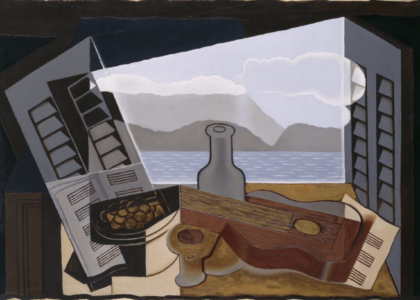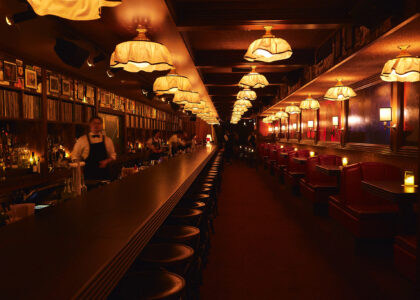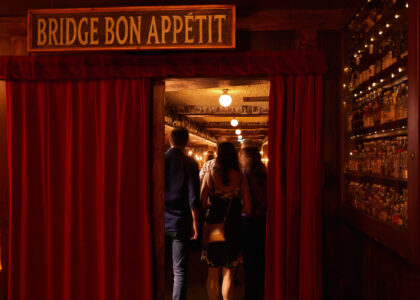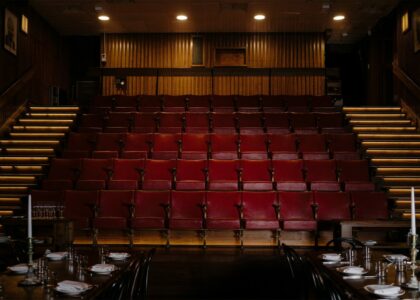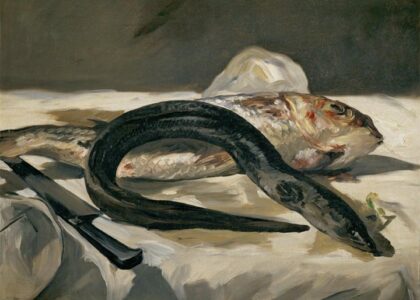“The demons of the city showed me the way,” Giorgio de Chirico wrote, and in Rome those demons appeared in the afternoon. That was the hour when he began painting, and until then he would rest, dawdle, and sometimes nurse a mysterious abdominal pain, the cause of which has never been identified. In the morning he would walk to the Caffé Greco for coffee, and afterwards return to his flat above the Spanish Steps to drink vermouth (he liked it so much he once appeared in an ad for Punt e Mes). Others found the heart of Rome too noisy for living and working, but for him it was the centre of the centre of the world. His apartment was “carefully and expensively furnished”, one visitor remembered, full of glittery and plush surfaces that looked out-of-time. By then it had become more a place of exile than a pilgrimage site. De Chirico had renounced modern art, outraging the Surrealists who adored him, and now along the walls of his flat hung a gallery of classical self-portraits, set in old-fashioned gilded frames. In a heavy, chocolate-box style, they depicted De Chirico cosplaying as the pompous heroes of another age: a bullfighter, a Roman in a toga, a Renaissance nobleman ready to throw down the gauntlet.
He signed some of these works as Pictor Optimus – “the Greatest Painter” – and critics and fellow artists hated them. In 1945 he had written a morning prayer, asking God to help him “restore the splendour of painting/The splendour it has lost for almost a century”, and then spent the years rediscovering the lost technologies of Old Masters. He would stay up late, sometimes all night, mixing oils and media to unlock the alchemy of Titian or Donatello. Then he would apply them in strange, tasteless ways he insisted were genius. Sincere and a pisstake at the same time, these paintings were so provocative that the confusion and embarrassment around “late de Chirico” persists today.
It was a curdled version of his influence, which was just as lasting. For the early Surrealists, encounters with De Chirico’s early paintings were almost religious experiences. His paintings of shadowy, heat-blazed plazas and colonnades were full of impossible angles and mysterious objects, and they helped define the art of the century to come. Magritte had burst into tears the first time he saw Song of Love. Yves Tanguy was working odd-jobs in Paris when he glimpsed Child’s Skull through a bus window, and its effect was so galvanic that he jumped off and resolved to become a painter on the spot.
These “metaphysical paintings” were illuminated by a spare, bright light that was otherworldly. “I for my part believe that a place that paralyses and freezes the brightness of noonday hides more secrets than a dark room in which someone is holding a seance,” he wrote to a friend, and the sun in his paintings was penetrating instead of illuminating. There was “nothing more mysterious in all the centuries of history than the shadow of a walking man”. As a child he had obsessed over plate illustrations of earth “before the flood”, and in the confines of Italian piazzas emptied at siesta time, he found a disquiet that was not just ancestral, but older than time.
Furniture could hold “anguish” – De Chirico had first started painting chairs after finding some abandoned in a field, objects he thought “seemed bathed in an air of sadness”. Even simple shapes like triangles could open a private gateway to some ancient terror, refreshing the old relationship between geometry and the occult. Street life became still life, the altar for a secret iconography, full of glyphs, omens, and ciphers without a key.
Despite his turn to traditionalism, he revisited and repainted these compositions decades later, even backdating works to the “metaphysical” period. He may have been the most forged artist of the 20th century, and many of the forgeries were his own, fugazi early works he called veri falsi – “real fakes’’.
For all but a few fellow artists, this two-front war on modern art was also an act of treason. André Breton, the “Pope of Surrealism”, said De Chirico had committed a “fraud against the miracle”, and lost his temper when visiting the Rome studio. The fact De Chirico was not only an artist’s artist, but a poet’s artist, and a director’s artist, and a writer’s artist too (he was also an accomplished writer, poet, sculptor, jeweller and set designer) further deepened the insult. In post-war Italy, the lingering taint of Fascism made these transitions politically suspect as well as tasteless.
De Chirico’s turn was so abrupt some observers thought it required diagnosis. It was true that his early style had been borne out of illness – in a state of “morbid sensitivity” after a long intestinal malady, he “had a strange impression of seeing everything for the first time” in a Florentine town square. It was an “enigma” he returned to for the rest of his life, painting as many as 18 versions of the same painting, and rejecting any attempt to separate the new style from the old. “I have never changed,” he said, while still renouncing himself.
This is an excerpt from issue 3 of Swill magazine. Grab your copy today to read the whole thing.

